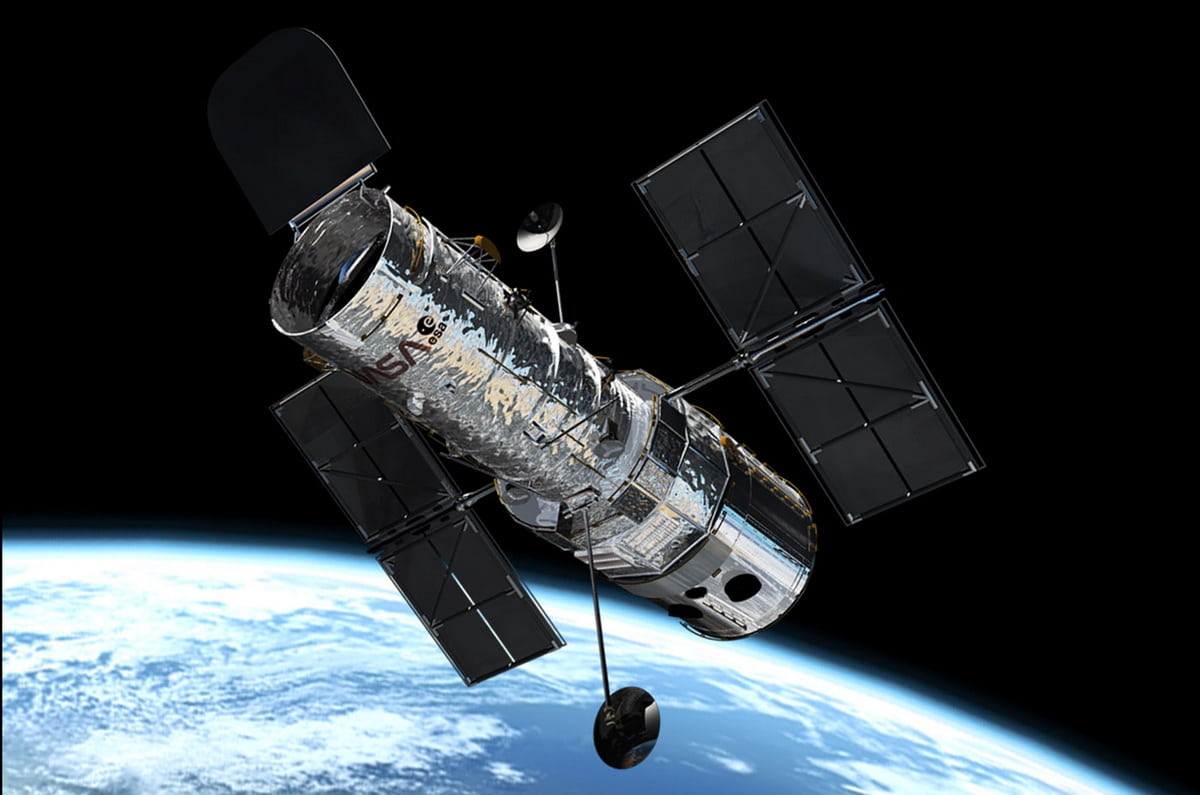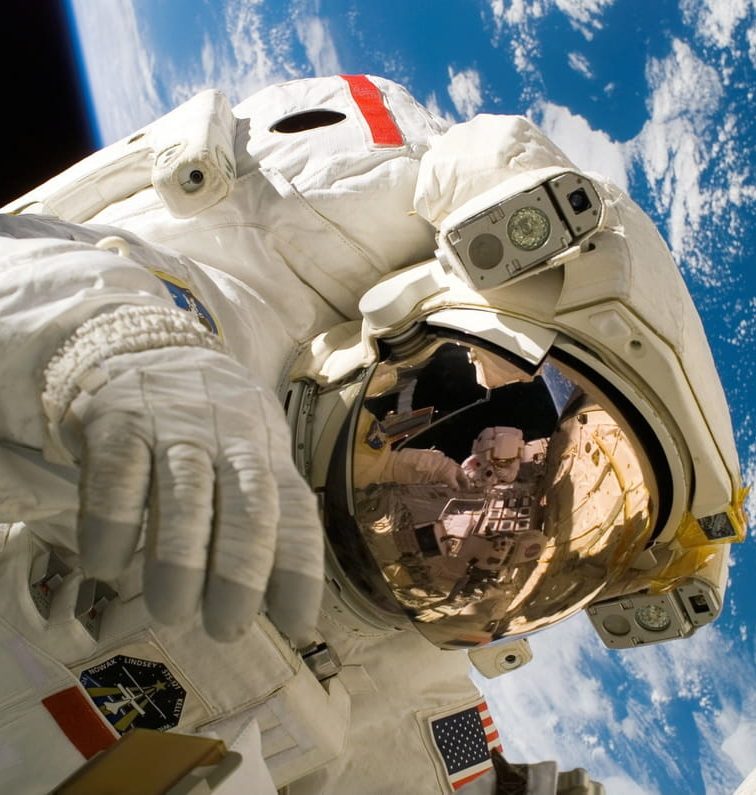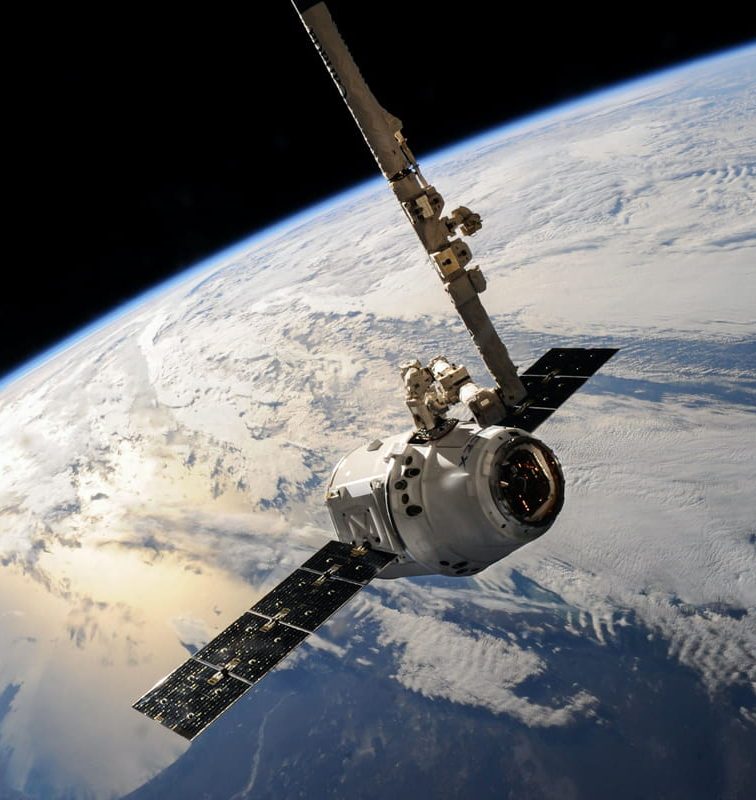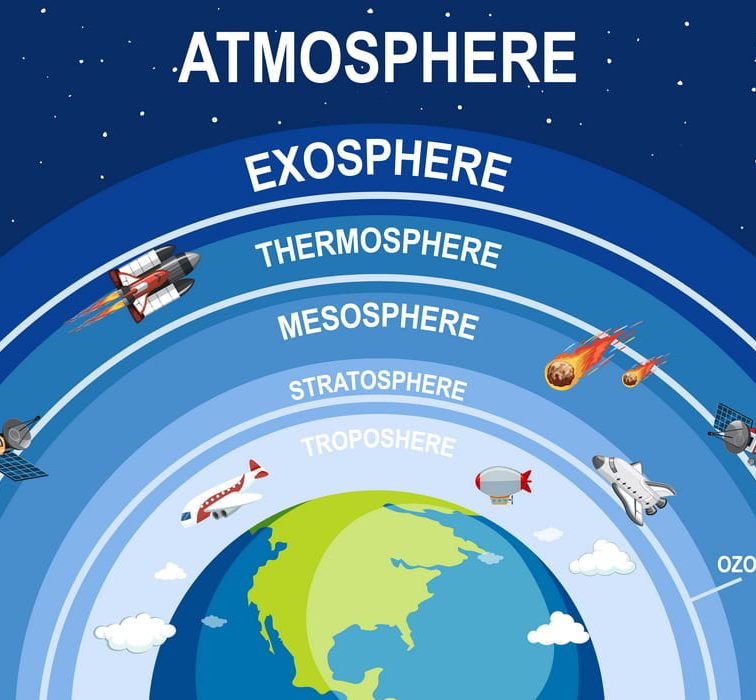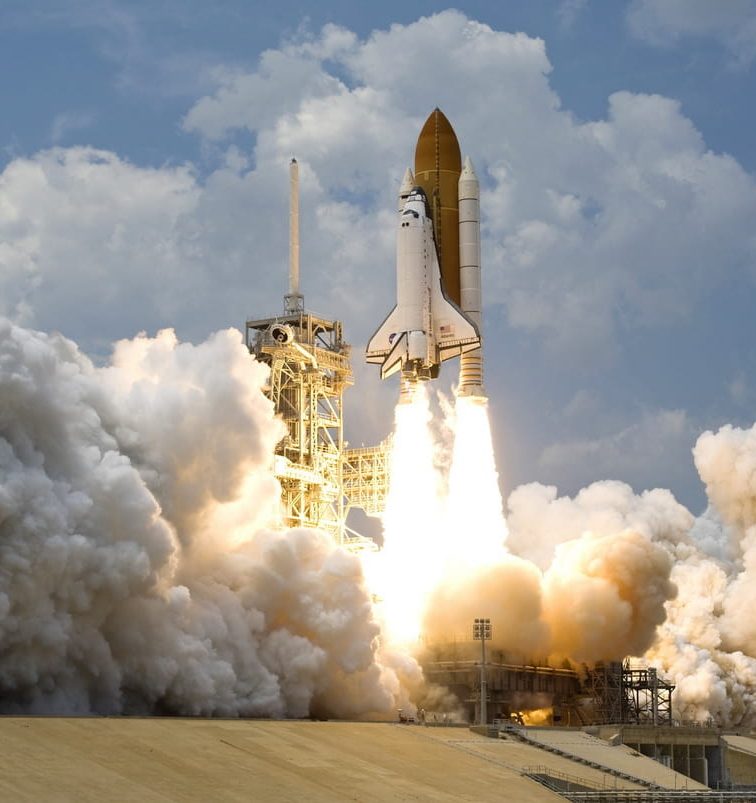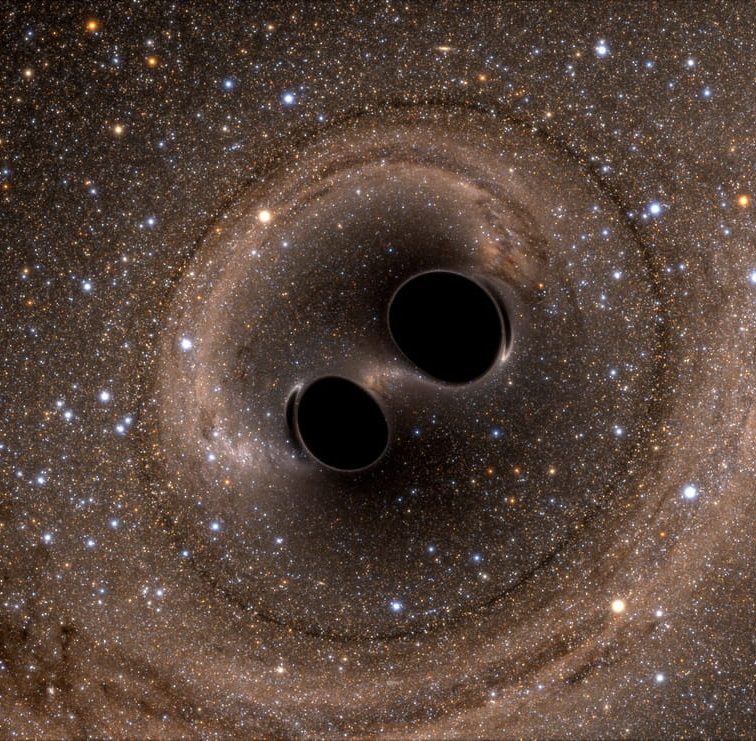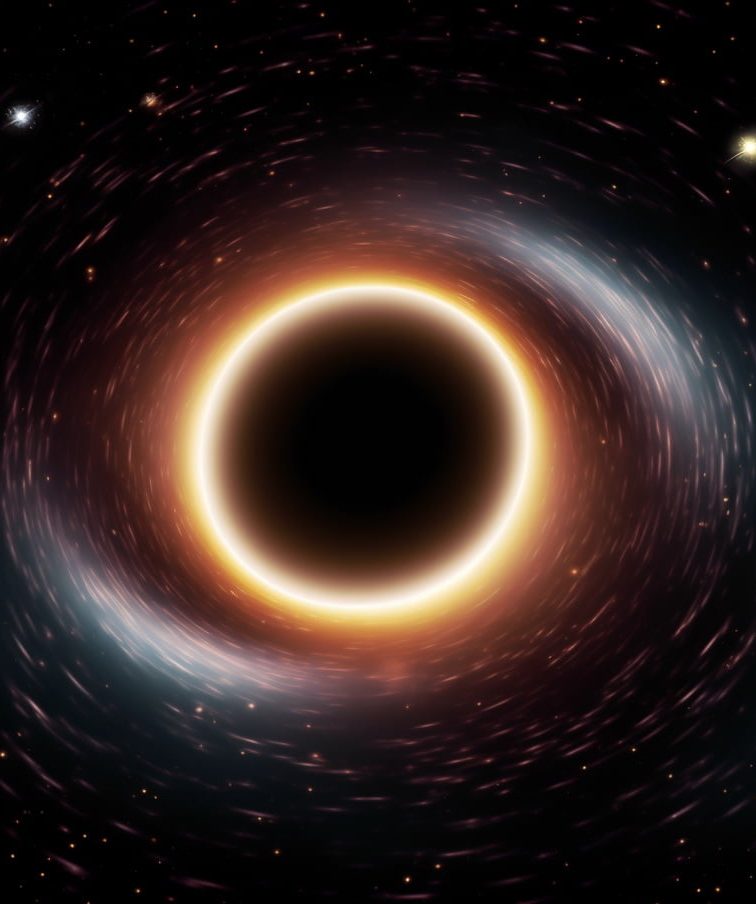Well, strap in folks, because it’s time to journey into the great unknown (kind of)! But hey, no need for a space helmet, because we’re just taking a mental leap through some fun facts about the Hubble Space Telescope.
You might have heard about this mighty lens in the sky, but did you know it’s more fascinating than a cat chasing a laser pointer on your living room floor? If not, prepare to have your mind blown faster than a rocket launch.
Whether you’re an astro-nut (see what I did there?) or just looking for some Hubble Space Telescope fun facts to drop at your next dinner party, you’re in for a treat. Let’s dive in!
1. Who Made This Magnificent Marvel?
It’s not aliens, I promise! The Hubble Space Telescope is a combined effort of NASA and the European Space Agency (ESA). Now, that’s what I call an intergalactic bromance. Imagine the meetings: a bunch of serious-looking folks, chatting over interstellar blueprints and probably sipping space coffee.
Fun Fact: Coffee tastes different in space. But that’s a topic for another day. The Hubble wasn’t just a simple DIY project. It took years of planning, engineering, and collaboration to ensure this telescope could gaze deep into space and deliver those gorgeous pics of the universe.
2. A Launch Date to Remember
So, when was the Hubble Space Telescope launched? Drumroll please… April 24, 1990! Pop quiz: What else was happening around that time? Hint: The Fresh Prince of Bel-Air was just starting its iconic six-year run on TV.
While Will Smith was “chillin’ out maxin’ relaxin’ all cool”, the Hubble was prepped to take off aboard the Space Shuttle Discovery. Once it reached orbit, it set its sights on the vast cosmic playground, ready to unveil its secrets.
3. How Much Does This Beauty Weigh?
Considering the Hubble’s massive contributions to science, you’d think it would weigh as much as an elephant wearing a suit of armor. But nope! It tips the scales at a relatively svelte 24,500 pounds (about 11,110 kg).
For some context, that’s like the weight of two adult elephants (sans armor) or about 8 small cars. Despite this ‘lightweight’ status in the universe of giant telescopes, it’s a heavy hitter when it comes to delivering breathtaking cosmic images.
4. Not Just a Floating Camera
When you think of Hubble, you might imagine it as a giant space camera, snapping away cosmic selfies. But it’s so much more! This telescope is a complex combo of cameras, spectrographs, and sensors. Its gear includes the Wide Field and Planetary Camera 2 (WFPC2), the Space Telescope Imaging Spectrograph (STIS), and the Cosmic Origins Spectrograph (COS), to name just a few.
And each of these tools has a unique role. While WFPC2 gives us those Insta-worthy pics, STIS breaks down light to help us understand the universe’s chemistry. Essentially, Hubble doesn’t just show us the universe; it helps us read it.
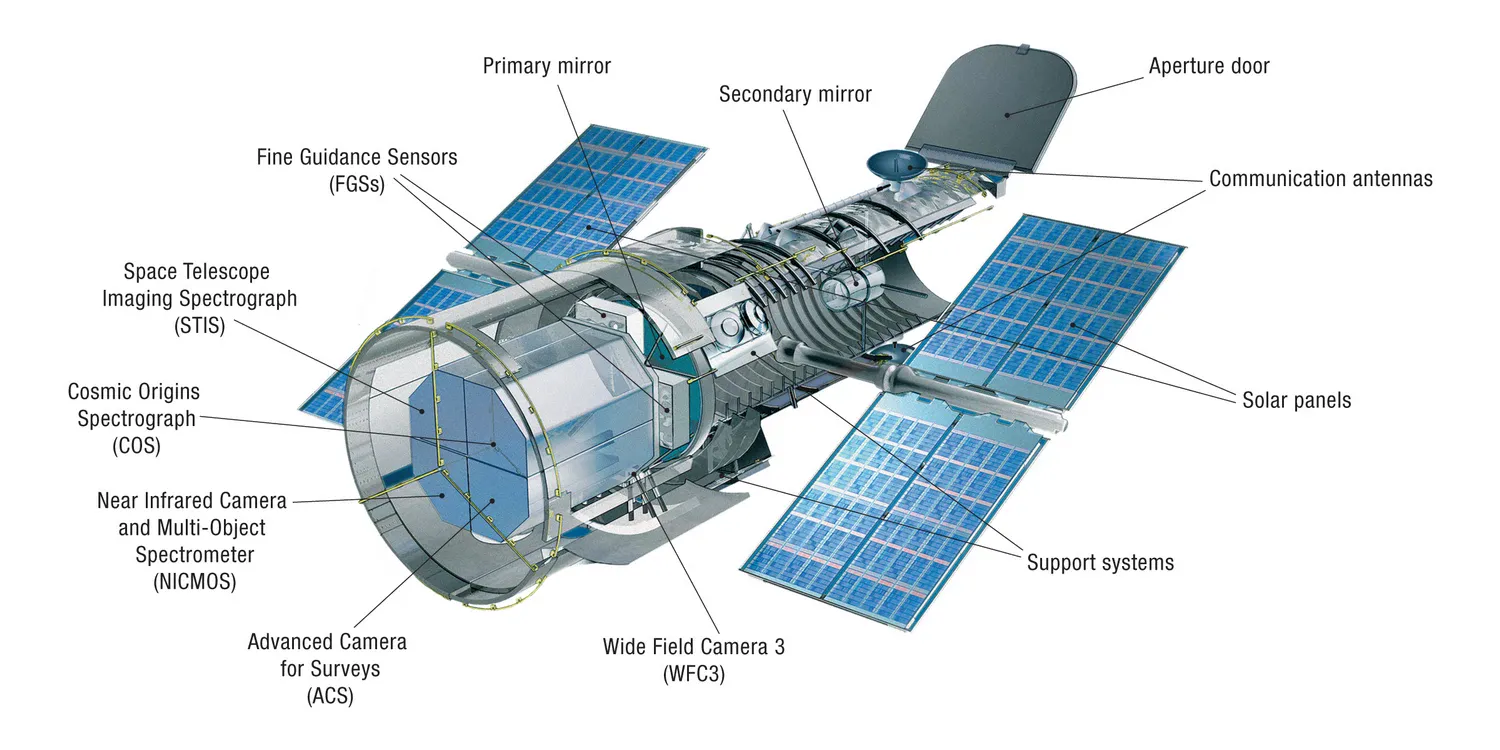
Image source: hubblesite.org
5. A Not-So-Perfect Start
Hold onto your space hats! This might come as a shock, but Hubble didn’t have a smooth beginning. After its grand launch, scientists eagerly awaited its first images. However, they quickly realized something was off. The pics were blurry!
Gasp! The culprit? A tiny flaw in the main mirror, only about 1/50th the thickness of a human hair. Imagine having a smudge on your glasses, but a billion times worse. But fear not, because in 1993, a repair mission was sent, turning Hubble from the universe’s Mr. Magoo into its top photographer.
6. Not Stationary, But Speedy!
Thought Hubble’s just chilling up there, lazily gazing at stars? Think again! This speedy stargazer is whizzing around Earth at a whopping speed of about 5 miles per second (8 km/s). Yep, that’s faster than you running to grab that last slice of pizza!
In simpler terms, it completes one full orbit around our lovely blue planet approximately every 95 minutes. So while you’re binge-watching your favorite show, Hubble’s already circled Earth a couple of times. Talk about cosmic cardio!
7. No Batteries Included!
Imagine taking a long road trip and realizing you forgot to charge your phone. Nightmare, right? Well, Hubble never has to worry about that. Why? Because it’s sun-powered, baby!
The telescope is equipped with massive solar panels that span about 40 feet (12.1 meters) each. These panels absorb sunlight, converting it into electricity to power Hubble’s instruments. This green energy approach not only ensures that the Hubble has a consistent power source but also gives it the eco-friendly star badge in the vast universe.
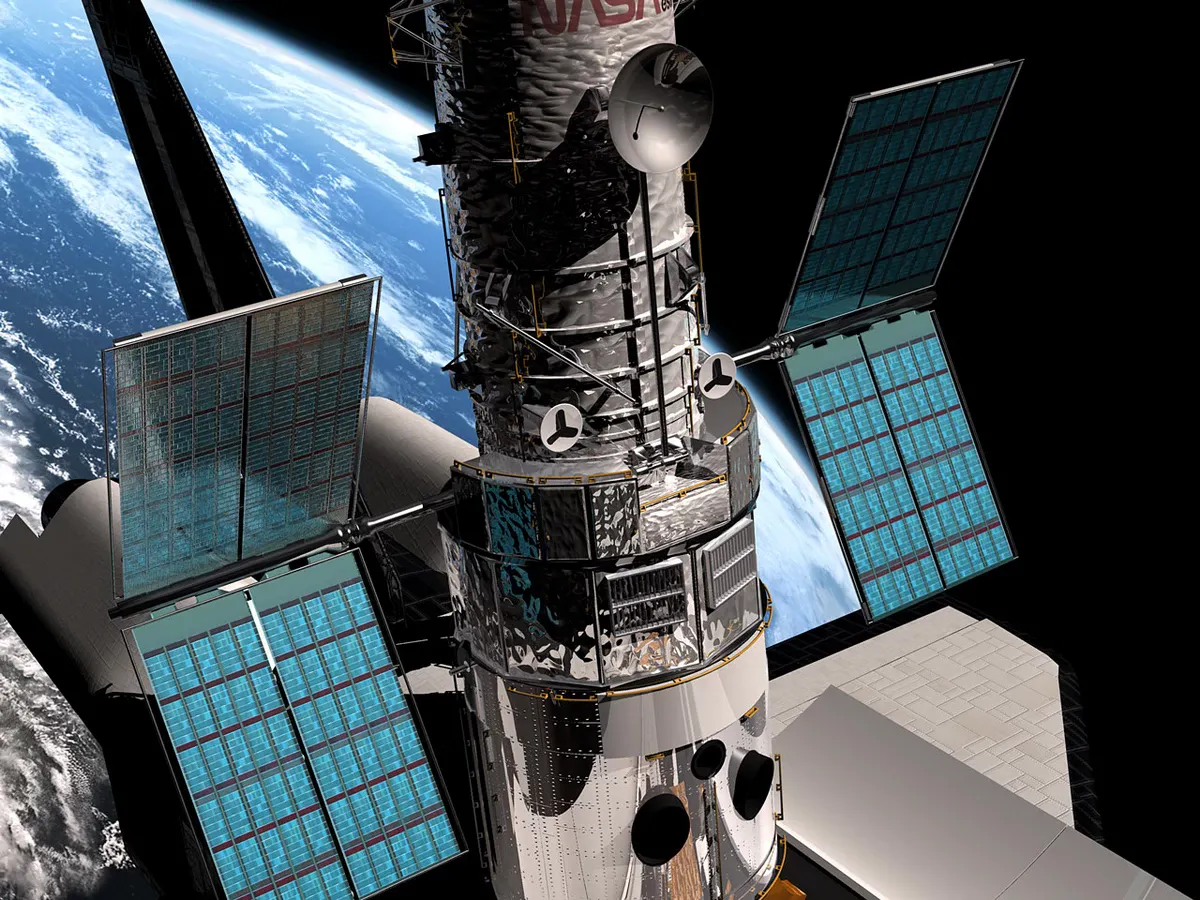
Image source: esahubble.org
8. Hubble’s Cosmic Lifespan
Most tech gadgets become obsolete in a few years. But not our dear Hubble! Launched in 1990, this telescope was initially expected to be in operation for about 15 years. But here we are, decades later, and it’s still going strong!
It’s like the grandma of space instruments, with wisdom and insights growing richer over time. Thanks to numerous servicing missions and tech upgrades, Hubble’s lifespan has been extended, allowing it to continue its cosmic revelations.
9. A Library of Images
What do you get when you combine a super telescope with years of cosmic exploration? A jaw-dropping collection of over 1.3 million observations! That’s right, the Hubble has captured more than just a few weekend snaps.
Its images range from close-ups of our neighboring planets to distant galaxies, forming a vast library of cosmic wonders. And guess what? Most of these images are available for public viewing. So next time you’re feeling a bit meh, take a quick online trip to the universe, courtesy of Hubble.
10. Peeking into the Past
One of the most astounding abilities of Hubble is its knack for time-travel. Okay, not literally, but close enough! The telescope captures light that has taken billions of years to reach us. This means when Hubble focuses on a distant galaxy, we’re actually seeing it as it was billions of years ago.
It’s like having a cosmic DeLorean, letting us glimpse into the universe’s younger days. The Hubble Deep Field image, for instance, showcased galaxies from nearly 13 billion years ago! Makes your old high school yearbook seem pretty recent, huh?
11. A Name with Historical Roots
So, who’s the genius behind the name “Hubble”? The telescope is named in honor of the astronomer Edwin Hubble. No, he didn’t build it in his backyard, but he did make some monumental discoveries. In the 1920s, Edwin concluded that our universe was expanding, laying the foundation for the Big Bang theory.
So, when it came to naming this incredible space observatory, it seemed fitting to tip a cosmic hat to the man who changed the way we see the universe.
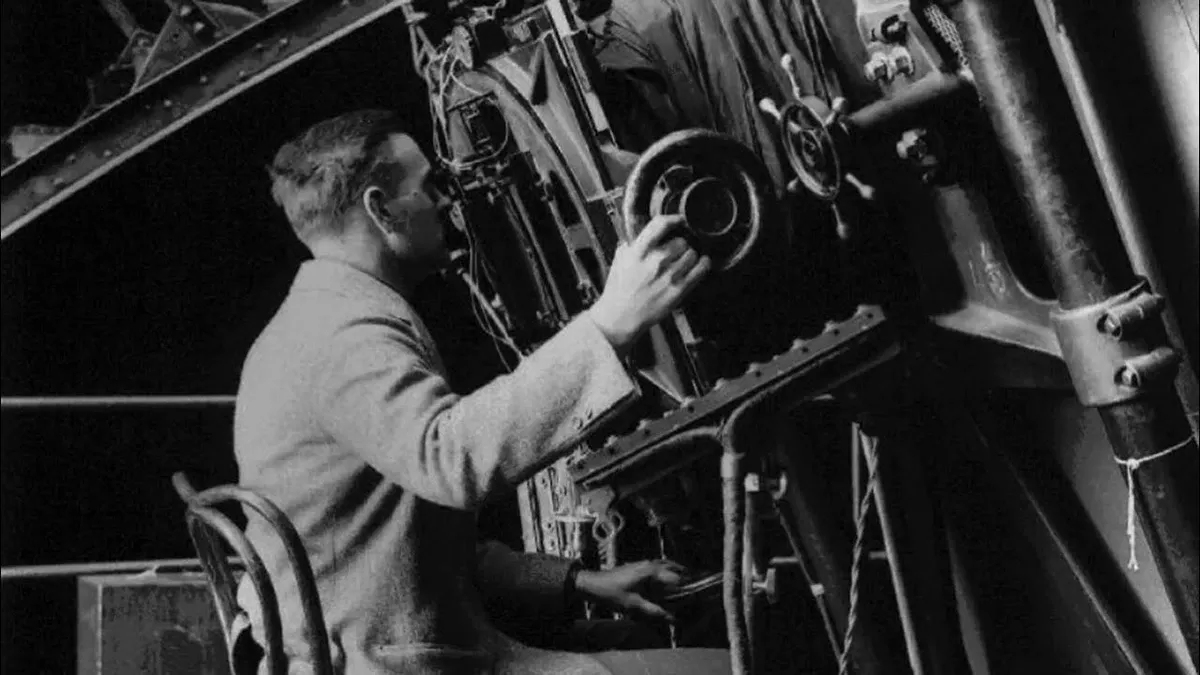
Image source: rocketstem.org
12. Not Alone in the Universe
While Hubble might seem like the sole ruler of space telescopes, it isn’t flying solo. Over the years, other telescopes like the James Webb Space Telescope (JWST) and the Chandra X-ray Observatory have joined the cosmic exploration squad. Each of these space behemoths has its unique specialty.
While Hubble gives us mesmerizing visible-light images, Chandra dives into X-rays, and JWST is designed to study the universe through infrared. Together, they form a trio of celestial detectives, each uncovering different layers of the universe’s mysteries.
13. Rescues and Repairs in Space
Hubble may be a cosmic heavyweight, but it’s had its fair share of hiccups. Lucky for it, astronauts have played space-mechanic to its rescue not once, not twice, but five times! These servicing missions, carried out by NASA’s Space Shuttles, have been crucial.
They’ve installed new instruments, replaced old ones, and given Hubble some much-needed upgrades. Imagine it as a spa retreat, but in space. And the results? Well, post each mission, Hubble’s vision got sharper and its discoveries even more stunning!
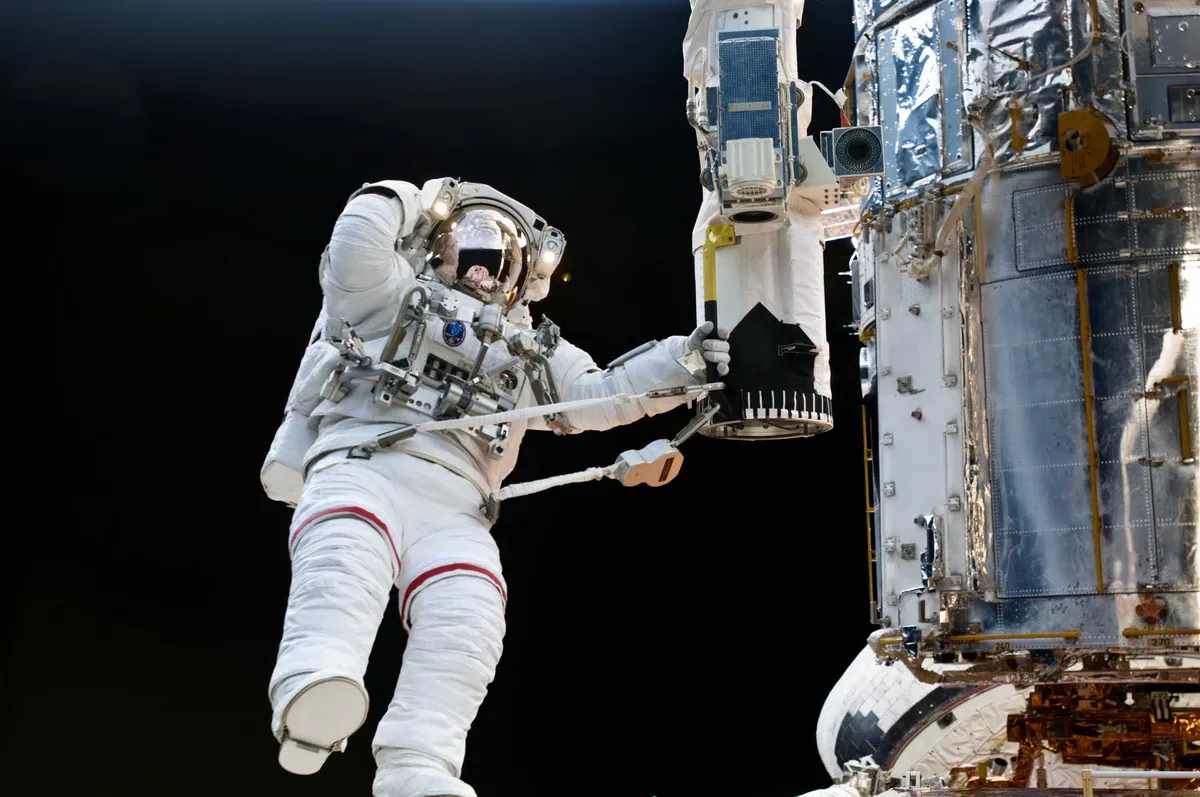
Image source: nasa.gov
14. Size Does Matter (in Space!)
So, how big is Hubble? Picture a school bus. That’s right, Hubble’s roughly the length of a large school bus, measuring about 43.5 feet (13.2 meters). And weighing in at a whopping 24,500 pounds (11,110 kg), it’s not something you’d want landing on your foot!
This massive size allows Hubble to house all its intricate instruments and provide stability as it orbits our planet. And while it might not fit in a typical garage, its size ensures it captures the universe in all its grandeur.
15. No Touchpad, But a Fancy Remote
You might wonder, “Who’s steering this beast?” The answer: some really skilled folks, but not from space. Hubble is operated remotely from NASA’s Goddard Space Flight Center in Maryland. Through a series of commands sent from Earth, the telescope is directed to observe specific regions of space.
It’s like using a universal remote, but WAY cooler. This remote operation ensures the telescope’s safety, longevity, and precision as it goes about its cosmic errands.
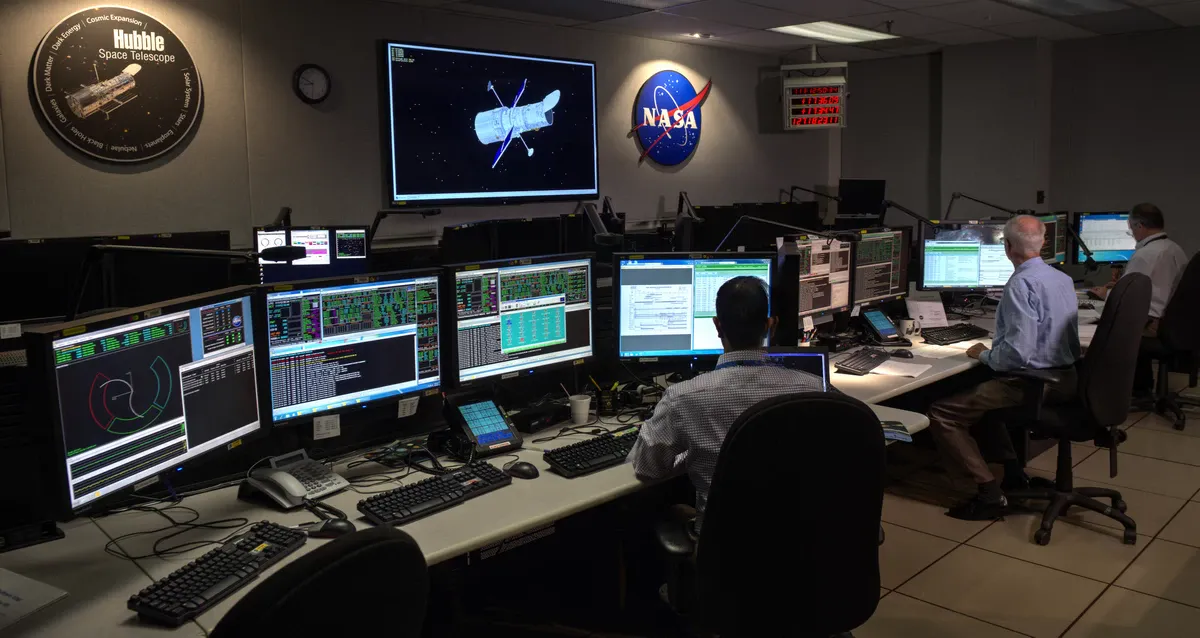
Image source: nasa.gov
16. The Colorful Illusion
Ever marveled at Hubble’s vibrant, colorful images of space? Here’s a little secret: the cosmos isn’t as rainbow-tinted as those photos suggest. Hubble captures images in black and white. Say what? Yep, the colors you see are added later based on the wavelengths of light that celestial objects emit.
Different filters allow Hubble to pick up specific wavelengths, which scientists then translate into colors we can see. So, while the colors might be a tad “interpreted”, they represent real data about the universe. Makes those photos even cooler, doesn’t it?
17. Hubble’s Famous “Eagle Eye”
While the human eye is great for spotting a friend across the room or reading the fine print on a contract, Hubble’s “eye” is on another level. Its clarity and resolution are so precise that if it were on Earth, it could spot a firefly in Tokyo from Maryland!
This eagle-eyed prowess helps Hubble distinguish between stars in a crowded galaxy cluster, offering us a clearer understanding of our intricate universe.
18. The Cosmic Socialite
The Hubble isn’t just a tool for astronomers. It’s a global sensation, engaging people worldwide through its breathtaking images and discoveries. It’s the star (pun intended!) of numerous documentaries, articles, and even has its own IMAX movie.
Hubble’s social media platforms are abuzz with activity, making it a cosmic influencer of sorts. If Hubble had a LinkedIn, it would probably read “Professional Star Gazer, Influencer, and Universal Marvel.”
19. Beyond the Visible Spectrum
While our eyes are limited to the visible spectrum of light, Hubble’s prowess extends further, letting it peek into both the ultraviolet and near-infrared wavelengths. This capability is a game-changer!
Many celestial phenomena emit light beyond what our eyes can detect. Hubble’s extended range helps scientists understand phenomena like star formation and the cores of galaxies. It’s like Hubble has its own set of cosmic night-vision goggles!
20. A Silent Observer
Hubble has been our eyes into the universe, but did you know it’s been doing its job in complete silence? Space, where Hubble orbits, is a vacuum, which means there’s no air to carry sound. So, despite its massive operations and the bustling activity of the universe around it, Hubble works in utter and absolute silence.
It’s the universe’s most silent yet revealing observer, capturing loud revelations without making a sound.
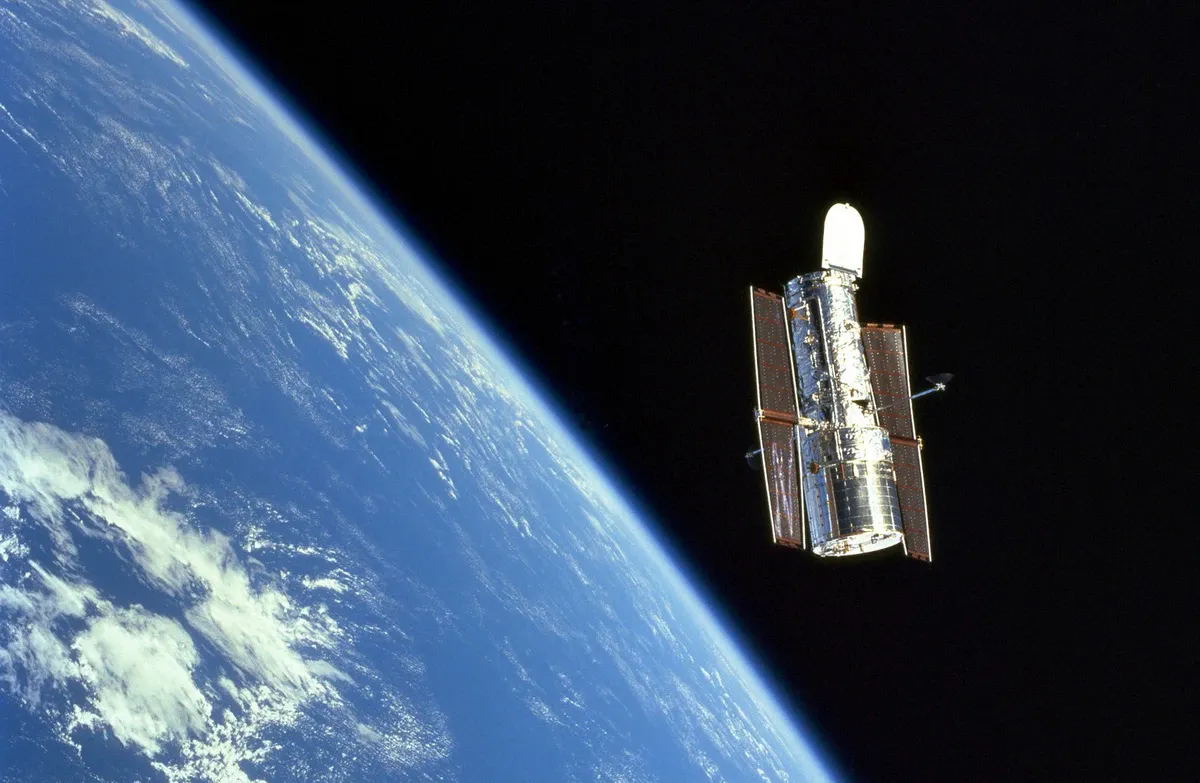
Image source: Wikimedia Commons
21. Hubble’s Unexpected Gyroscopes
Steering Hubble towards the stars requires some nifty tech! One crucial component is its gyroscopes, which help in pointing the telescope and keeping it stable. Initially, Hubble was equipped with six gyroscopes, but it can operate on as few as three.
Over time, these gyroscopes have worn out and been replaced during servicing missions. The resilience of Hubble is exemplified in its ability to continue operations even when faced with multiple gyro failures. It’s a bit like a cat balancing on a thin ledge – showing perfect poise in precarious situations!
22. Hubble’s Stellar Birthdays
It’s not just humans who celebrate birthdays; Hubble does too! Every year, to mark its launch date, the Hubble team releases a special image, often revealing new facets of the universe.
These annual images are not just a celebration of Hubble’s longevity but also a showcase of its ever-evolving capabilities. From nebulae to galaxies, these “birthday pictures” are a treat for space enthusiasts and serve as a testament to Hubble’s enduring legacy.
23. Battling Cosmic Contaminants
Hubble isn’t exempt from the challenges of space! Over time, a thin layer of contaminants can settle on its mirror, potentially reducing its observing capabilities. However, the genius engineers behind Hubble came up with a solution even before the telescope was launched.
Periodically, Hubble’s instruments are heated in a process called “bake-out” to rid them of these contaminants. Imagine it as giving Hubble a spa day, ensuring it always has the clearest view of the cosmos!
24. The James Webb’s Big Bro
While Hubble’s had its time basking in the space limelight, there’s a new kid on the block. The James Webb Space Telescope (JWST) is often hailed as Hubble’s successor. But instead of viewing it as a replacement, think of JWST as Hubble’s younger, albeit bigger, sibling.
While both telescopes will coexist in space for some time, JWST will explore realms beyond Hubble’s reach, particularly the infrared spectrum. It’s like if Hubble was rock ‘n’ roll, JWST is the cool jazz that followed.
25. A Parade of Planets: Hubble’s Planetary Tours
Though Hubble’s mainstay has often been deep space objects, it hasn’t shied away from our neighboring planets. Hubble’s planetary portraits of Mars, Jupiter, Saturn, and even the tumultuous Neptune and Uranus atmospheres have provided unparalleled clarity, showcasing storms, auroras, and seasonal changes.
These planetary close-ups allow researchers to study the weather and atmospheric conditions of our celestial neighbors in detail.
26. The Mystery of Dark Matter: Mapping Invisible Mass
Hubble might be famous for capturing the vibrant cosmos, but it’s also played detective by mapping the elusive dark matter. Through gravitational lensing (where the gravitational pull of massive objects bends and magnifies the light of objects behind them), Hubble has traced the clumps of dark matter in distant galaxy clusters.
While this mysterious substance remains intangible and invisible, its effects on visible matter are undeniable, and Hubble’s observations are key to understanding its cosmic role.
27. Shooting Stars? No, Hubble’s Supernovae Sightings!
When a massive star explodes, it’s not just a spectacle but a treasure trove of cosmic information. These events, known as supernovae, have been captured by Hubble over the years. By studying these colossal explosions, astronomers gain insights into the life cycles of stars and the universe’s expansion rate.
Hubble’s sharp vision has enabled it to catch the early stages of these stellar fireworks, providing data that’s crucial for our understanding of the cosmos.
28. Hubble’s Ties with Einstein
Albert Einstein might’ve never laid hands on Hubble, but there’s a deep connection. Einstein’s theory of relativity spoke of a universe that’s either expanding or contracting. But, for various reasons, Einstein introduced the “cosmological constant” to ensure a stable universe.
Hubble (the telescope and the man it’s named after, Edwin Hubble) played a key role in proving the universe was indeed expanding. So indirectly, Hubble confirmed a part of Einstein’s genius while proving another part unnecessary!
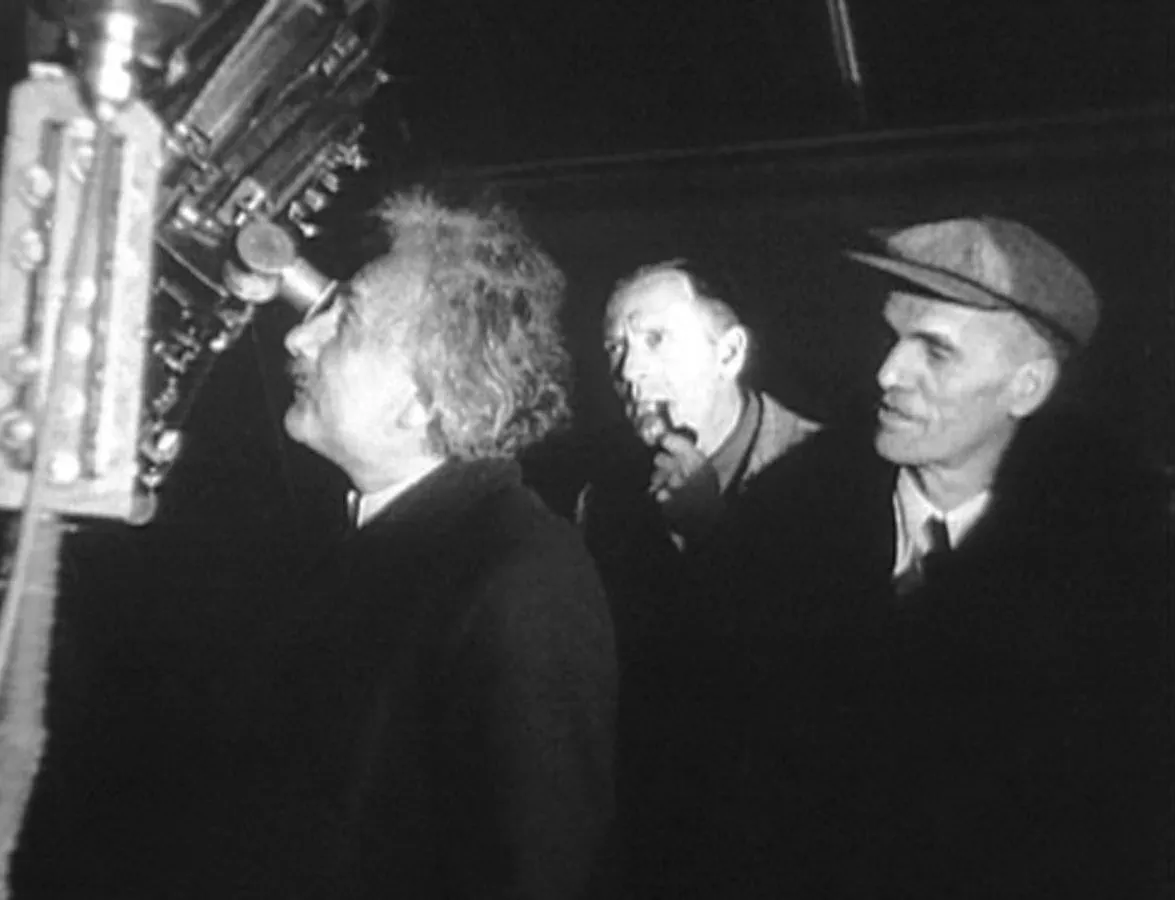
29. Taking UV to the Next Level
While we slather on sunscreen to protect from UV rays, Hubble is out there soaking them up, but for a good reason! Earth’s atmosphere filters out most ultraviolet (UV) light, making ground-based observations nearly impossible.
Hubble’s position above the atmosphere allows it to observe UV light in pristine clarity. This ability has enabled scientists to study hot young stars, the effects of UV radiation on planets’ atmospheres, and even the massive black hole at our galaxy’s heart.
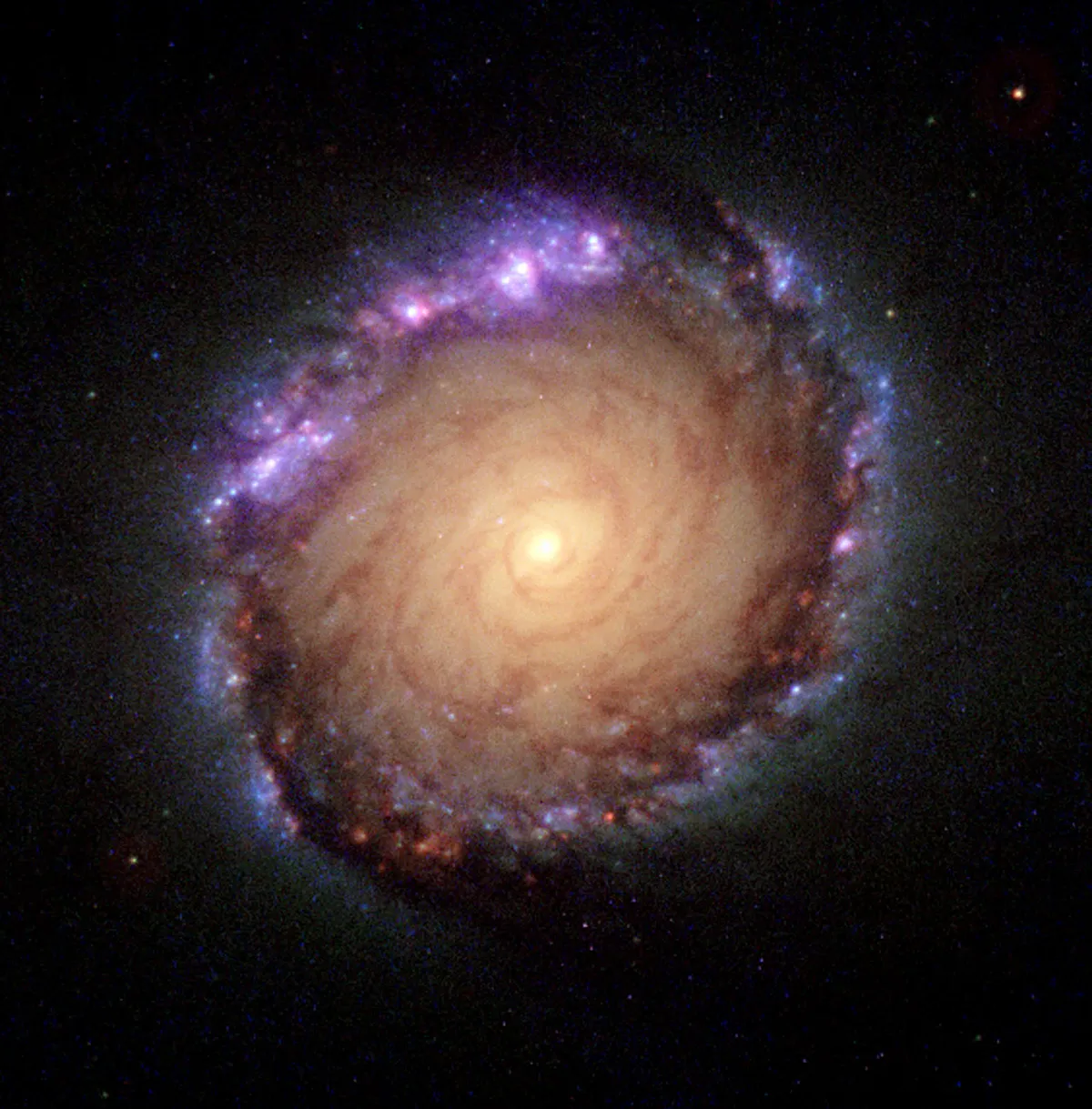
Image source: esahubble.org
30. Going Out with a Bang: Anticipating Hubble’s Grand Finale
As with all good things, Hubble’s mission will one day conclude. But don’t fret; even in its end, it promises a spectacle! Hubble isn’t equipped with thrusters to guide it back to Earth safely. So, when its operational life reaches its twilight, the telescope will remain in orbit for a while, gradually descending.
Estimates suggest that Hubble will re-enter Earth’s atmosphere sometime between 2030 and 2040. And when it does, it’ll light up the sky, disintegrating in a brilliant streak of fiery glory. So, for the sky watchers of the future, Hubble’s final bow will be a memorable sky show, a fitting tribute to an instrument that illuminated the cosmos for us all.

FAQ
What are 10 interesting facts about the Hubble Space Telescope?
- Hubble orbits the Earth at an average altitude of 547 kilometers (339 miles).
- It doesn’t have thrusters but uses gyroscopes for movement and positioning.
- Hubble has sent back over 1.5 million observations since its mission began in 1990.
- Astronauts visited Hubble five times to conduct repairs and upgrades.
- It has observed over 48,000 celestial objects.
- Hubble’s data is so vast that over 4,000 scientific papers have been published based on its findings.
- It takes Hubble about 97 minutes to orbit the Earth.
- Hubble is named after the astronomer Edwin Hubble.
- The telescope has a near-perfect 2.4-meter (7.9-foot) mirror.
- With no atmosphere to interfere, it can capture images of space with incredible clarity.
What are some facts about the Hubble Telescope for kids?
- Hubble is like a big camera in space that takes pictures of stars and galaxies.
- It’s been in space since 1990—that’s probably way before you were born!
- Astronauts have visited Hubble to fix and improve it.
- It’s named after a famous star scientist, Edwin Hubble.
- Hubble has shown us places in space that are 13.4 billion light-years away.
What can’t the Hubble observe?
Hubble is not equipped to observe objects emitting primarily in the radio or X-ray frequencies. Additionally, it cannot observe extremely bright objects like the Sun, as they could damage its instruments.
How far can Hubble see?
Hubble’s deep space capabilities allow it to observe galaxies that are up to 13.4 billion light-years away, effectively peering back over 90% of the universe’s history.
Why can’t Hubble see Pluto?
Hubble can and has observed Pluto! However, capturing clear images is challenging due to Pluto’s small size and vast distance from Earth. Nevertheless, Hubble has provided the most detailed views of Pluto until the New Horizons spacecraft flew by it in 2015.
Can Hubble take pictures of Earth?
Technically, Hubble could photograph Earth, but it doesn’t. It orbits too quickly (once every 97 minutes) and is optimized for deep space observations, which makes snapping a good pic of our home planet difficult. Also, there are plenty of Earth-observing satellites better suited for that job!
How far back in time could Hubble see?
Hubble can observe light from galaxies that formed just 400 million years after the Big Bang, which means it’s looking back in time about 13.4 billion years!
What is Hubble famous for?
Hubble is renowned for its deep field images, capturing galaxies billions of light-years away, revealing the age of the universe, its observations confirming the expansion of the universe, and producing some of the most detailed images of planets, stars, and other celestial phenomena.
What did Hubble discover?
Among its numerous discoveries, Hubble has identified the rate of expansion of the universe, found evidence for dark energy, captured detailed images of distant galaxies, and identified protoplanetary disks around young stars, which are birthplaces for new planets.
How many planets has Hubble found?
While Hubble isn’t primarily a planet-hunter (other telescopes, like Kepler, fill that role), it has contributed to the study of planets outside our solar system, known as exoplanets. Hubble’s observations have led to the discovery and study of several exoplanets, especially through methods like gravitational lensing or by observing atmospheric compositions. The exact number is hard to pin down, as Hubble’s data often complements that of other telescopes, but its contribution to exoplanet science is undeniable.


